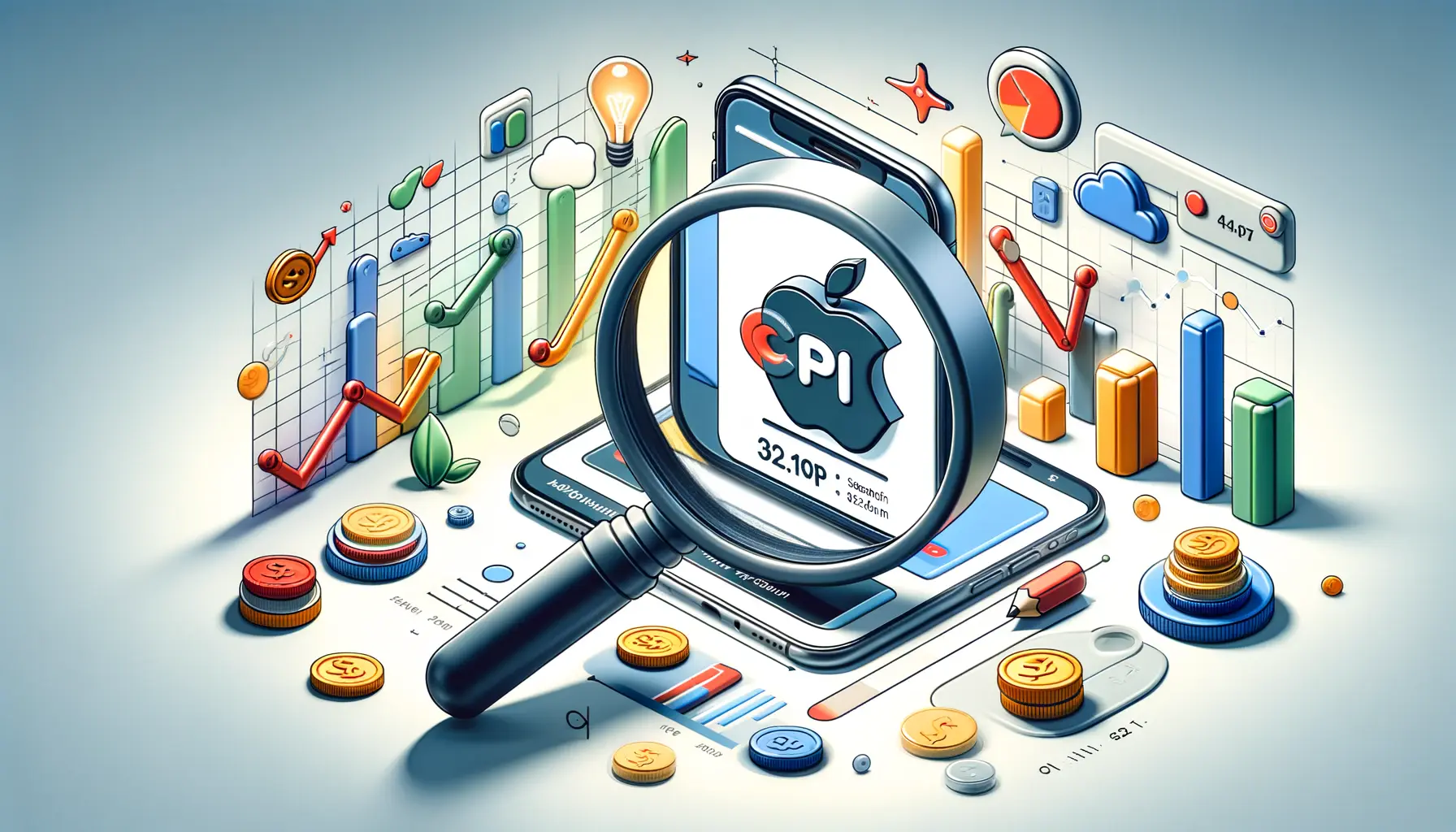Apple Search Ads have become a cornerstone for app developers and marketers aiming to boost their app’s visibility in a crowded marketplace.
With millions of apps vying for attention on the App Store, standing out requires not just creativity but also a strategic approach to campaign optimization.
Apple Campaigns, when executed correctly, can significantly enhance app discoverability, driving higher downloads and engagement rates.
This article delves into the intricacies of optimizing Apple Campaigns, offering valuable insights and actionable strategies to maximize their effectiveness.
At the heart of successful Apple Campaigns lies the understanding of user intent and the App Store’s unique ecosystem.
Unlike other advertising platforms, Apple Search Ads offer a direct pathway to users actively searching for apps, presenting a golden opportunity for targeted marketing.
However, tapping into this potential demands a nuanced approach, blending keyword optimization, bid management, and creative excellence.
The following sections will guide you through optimizing your Apple Campaigns for peak performance, ensuring your app not only reaches its target audience but also inspires action.
- Understanding Apple Search Ads
- Campaign Structure and Organization
- Bid Management and Budget Allocation
- Creative Optimization for Higher Engagement
- Targeting and Audience Segmentation
- Measuring and Analyzing Campaign Performance
- Leveraging Search Match and Automation
- Maximizing Success with Apple Campaigns
- Apple Campaigns Optimization FAQs
Understanding Apple Search Ads
Before diving into optimization techniques, it’s crucial to grasp the fundamentals of Apple Search Ads.
These ads appear at the top of App Store search results, marked by a subtle blue background, distinguishing them from organic listings.
The platform operates on a cost-per-tap (CPT) model, meaning advertisers pay only when a user taps on their ad.
This efficiency makes Apple Search Ads an attractive option for app developers looking to maximize their advertising spend.
Apple Search Ads is divided into two categories: Basic and Advanced.
The Basic version offers a simplified, automated approach, ideal for small businesses or those new to app advertising.
On the other hand, the Advanced version provides more control over campaigns, including detailed keyword selection, audience targeting, and budget allocation.
Choosing between these options depends on your marketing objectives, resources, and the level of granularity you wish to achieve in your campaigns.
Keyword Strategy
At the core of effective Apple Campaigns is a robust keyword strategy.
Keywords are the bridge between your app and potential users, guiding the App Store’s algorithm to display your ad for relevant searches.
Start by identifying the terms your target audience is likely to use when searching for apps like yours.
This involves a mix of brand terms, generic terms related to your app’s functionality, and competitor terms.
The goal is to cover a broad spectrum of potential searches while maintaining relevance to your app’s offerings.
Utilizing keyword research tools and analyzing competitor keywords can uncover hidden opportunities and gaps in your strategy.
Remember, the more relevant your keywords are to your app and user intent, the higher your chances of conversion.
It’s also essential to continuously monitor and adjust your keyword list based on performance data, ensuring your campaign remains aligned with user search behavior and market trends.
A solid keyword strategy is the foundation of successful Apple Campaigns, driving relevancy and user engagement.
Campaign Structure and Organization
After establishing a keyword strategy, the next step is to structure your Apple Campaigns effectively.
A well-organized campaign not only enhances manageability but also improves performance tracking and optimization.
The structure should reflect your marketing objectives, with separate campaigns for different goals, such as brand awareness, user acquisition, or engagement.
Each campaign can contain multiple ad groups, allowing for more granular targeting and creative testing.
For instance, you might have separate ad groups for different user demographics, app features, or geographic locations.
This level of organization ensures that your ads are tailored to specific segments of your target audience, increasing the relevance and impact of your messaging.
Ad Group Optimization
- Demographic Targeting: Tailor ad groups to target users based on age, gender, location, and device type. This ensures your ads reach the most relevant audience, increasing the likelihood of engagement and conversion.
- Keyword Themes: Organize keywords into thematic ad groups. For example, separate ad groups for “fitness tracking” and “diet planning” if your app offers both functionalities. This helps in crafting more focused ad copy and improving keyword relevance.
- Creative Testing: Use ad groups to test different creative sets, including screenshots and app previews. Analyzing performance data from these tests can inform your creative strategy, highlighting which visuals and messaging resonate best with your target audience.
Effective campaign and ad group organization is not a set-and-forget process.
It requires ongoing analysis and refinement based on performance data.
Regularly reviewing your campaign structure allows you to identify underperforming ad groups or keywords and make necessary adjustments.
This iterative process is key to optimizing your Apple Campaigns for peak performance.
Consider using a hierarchical structure for your campaigns, starting with broad objectives at the campaign level and narrowing down to specific targeting and creative strategies within ad groups.
Bid Management and Budget Allocation
Effective bid management is crucial for maximizing the return on investment (ROI) of your Apple Campaigns.
Apple Search Ads operates on a cost-per-tap (CPT) model, where you bid for keywords, and your bid amount influences your ad’s visibility.
Balancing competitive bids with budget constraints is essential to ensure your campaigns are both effective and sustainable.
Start by setting realistic budget caps for your campaigns and ad groups, based on your overall marketing budget and the specific goals of each campaign.
It’s important to allocate more budget to high-performing campaigns and keywords, while also setting aside a portion of your budget for testing new keywords and creative strategies.
Strategies for Bid Optimization
- Keyword Performance Analysis: Regularly review the performance of your keywords in terms of taps, conversions, and cost per acquisition (CPA). Increase bids on high-performing keywords to improve ad placement, and decrease bids or pause low-performing keywords to conserve budget.
- Competitive Bidding: Monitor the bidding landscape for your target keywords. If necessary, adjust your bids to stay competitive, especially for high-value keywords critical to your app’s visibility.
- Dynamic Bid Adjustments: Utilize Apple Search Ads’ automated bidding options to dynamically adjust bids based on your target CPA or return on ad spend (ROAS) goals. This can help optimize bid amounts in real-time, based on campaign performance.
Remember, bid management is an ongoing process that requires constant attention and adjustment.
By closely monitoring campaign performance and making informed bid adjustments, you can effectively manage your budget while maximizing campaign ROI.
Additionally, leveraging Apple Search Ads’ advanced features, such as Search Match and automated bidding, can further enhance your bid management strategy, driving more efficient and effective campaign performance.
Effective bid management involves a balance between competitive bidding for visibility and budget efficiency to ensure sustainable campaign performance.
Creative Optimization for Higher Engagement
While keywords and bids are critical components of your Apple Campaigns, the creative elements—app title, description, screenshots, and preview videos—play a pivotal role in converting impressions into downloads.
Creative optimization involves refining these elements to better capture the attention of potential users and encourage them to install your app.
Start by ensuring that your app’s title and description are clear, concise, and compelling.
They should communicate the unique value proposition of your app and include relevant keywords to improve search visibility.
However, the real game-changers are often the visual elements—screenshots and preview videos.
These should be eye-catching, informative, and reflective of the app’s core features and benefits.
Best Practices for Creative Assets
- Highlight Key Features: Use screenshots and videos to showcase the most attractive features of your app. Highlight what sets your app apart from competitors and address the needs or interests of your target audience.
- A/B Testing: Experiment with different creative sets to determine which combinations perform best. Test variations in screenshot order, video content, and even the app icon. Use performance data to guide your creative decisions.
- Localized Content: Tailor your creative assets to different geographic markets by localizing language, cultural references, and visual elements. Localization can significantly increase the relevance and appeal of your ads to a global audience.
Creative optimization is an ongoing process that should evolve based on user feedback, market trends, and performance data.
By continuously refining your creative strategy, you can improve user engagement, increase conversion rates, and ultimately drive more downloads for your app.
Remember, the goal is to make your app stand out in a crowded marketplace and convince potential users that your app is worth their time and attention.
A compelling creative strategy that resonates with your target audience can significantly enhance the effectiveness of your Apple Campaigns, turning viewers into users.
Targeting and Audience Segmentation
Targeting the right audience is essential for the success of your Apple Campaigns.
Apple Search Ads offers advanced targeting options that allow you to reach users based on demographic information, device type, location, and even user behavior.
By effectively segmenting your audience, you can ensure that your ads are shown to users most likely to be interested in your app, thereby increasing the likelihood of engagement and conversion.
To begin with, define your target audience based on the core features and intended use of your app.
Consider factors such as age, gender, interests, and geographic location.
This information will guide your targeting strategy and help you create more personalized and effective ad campaigns.
Implementing Effective Audience Segmentation
- Demographic Targeting: Use demographic data to tailor your campaigns to specific age groups, genders, or other demographic segments. This ensures that your ads are relevant and appealing to the audience they reach.
- Behavioral Targeting: Target users based on their app usage patterns and preferences. For example, you can target users who have downloaded similar apps or have shown interest in related categories.
- Geographic Targeting: Customize your campaigns for users in specific locations. This is particularly useful for apps that offer location-based services or content relevant to particular regions or cities.
Audience segmentation allows for more efficient use of your advertising budget by focusing your efforts on users who are most likely to convert.
It also enables you to test different messaging and creative strategies with various segments to identify what works best for each group.
Continuously refining your targeting and segmentation strategies based on campaign performance data is key to maximizing the impact of your Apple Campaigns.
Effective audience segmentation enhances campaign relevance and efficiency, leading to higher engagement rates and better overall campaign performance.
Measuring and Analyzing Campaign Performance
Understanding how to measure and analyze the performance of your Apple Campaigns is crucial for ongoing optimization and success.
Apple Search Ads provides a wealth of data and analytics tools that can help you gauge the effectiveness of your campaigns, from impressions and taps to conversions and cost per acquisition (CPA).
By closely monitoring these metrics, you can make informed decisions to refine your campaigns and improve ROI.
Start by setting clear objectives for what you want to achieve with your Apple Campaigns, such as increasing downloads, improving app visibility, or driving in-app purchases.
These goals will determine the key performance indicators (KPIs) you should focus on when analyzing your campaigns.
Key Metrics for Campaign Analysis
- Impressions and Taps: These metrics indicate the visibility of your ads and the level of user interest, respectively. A high number of impressions with a low tap rate may suggest that your ad creative or targeting needs adjustment.
- Conversion Rate: The percentage of users who download your app after tapping on your ad. A low conversion rate could indicate a mismatch between the ad and the app landing page or a lack of compelling content.
- Cost Per Acquisition (CPA): The average cost of acquiring a user through your campaign. Monitoring CPA helps ensure that your advertising spend is aligned with the value each user brings to your app.
Utilize Apple Search Ads’ advanced analytics features to segment data by campaign, ad group, or keyword for more detailed insights.
Experiment with different bidding strategies, targeting options, and creative sets, and analyze how these changes impact your KPIs.
Continuous testing and optimization based on performance data are essential for maximizing the effectiveness of your Apple Campaigns.
Regular analysis of campaign performance data is key to identifying opportunities for optimization and ensuring your Apple Campaigns deliver the best possible results.
Leveraging Search Match and Automation
Apple Search Ads offers a feature called Search Match, which automatically matches your ads with relevant search queries based on your app’s metadata and other factors.
This powerful tool can help you discover new keywords and audiences without manual input, potentially uncovering untapped opportunities for app visibility and user acquisition.
Leveraging Search Match effectively requires a well-optimized app listing, as the algorithm uses this information to determine relevancy.
In addition to Search Match, Apple Search Ads provides automation options that can streamline campaign management and optimization.
Automated bidding strategies, for example, adjust your bids in real-time based on your target cost-per-acquisition (CPA) or return on ad spend (ROAS), helping you achieve your marketing objectives more efficiently.
Automation can also extend to scheduling ads for specific times of day or days of the week, aligning your advertising efforts with user behavior patterns.
Maximizing the Benefits of Automation
- Set Clear Objectives: Define specific goals for your automated campaigns, such as increasing downloads within a certain CPA threshold. Clear objectives guide the automation tools in optimizing your campaigns effectively.
- Monitor Performance: While automation can save time and resources, it’s important to regularly review the performance of automated campaigns. Adjustments may be necessary to refine targeting, creative elements, or bidding strategies.
- Combine with Manual Strategies: Use automation in conjunction with manual campaign management for the best results. Automation can handle routine tasks and optimizations, while manual interventions allow for strategic adjustments based on deeper insights.
By effectively leveraging Search Match and automation features, you can enhance the efficiency and performance of your Apple Campaigns.
These tools not only simplify campaign management but also provide opportunities for optimization that might not be apparent through manual analysis alone.
Embracing automation, while maintaining oversight and strategic control, can lead to more successful and scalable Apple Campaigns.
Automation and Search Match are powerful tools in the Apple Search Ads arsenal, offering opportunities for efficiency and discovery that can significantly boost campaign performance.
Maximizing Success with Apple Campaigns
Optimizing Apple Campaigns for peak performance is an intricate process that demands a strategic approach, blending creativity with analytical precision.
Throughout this journey, we’ve explored the multifaceted aspects of Apple Search Ads, from understanding its core mechanics to leveraging advanced features like Search Match and automation.
The goal has always been clear: to enhance app visibility, engage the target audience effectively, and drive meaningful actions that contribute to the app’s success.
Key Takeaways for Peak Performance
- Developing a robust keyword strategy is foundational, ensuring your app connects with the right audience at the right moment.
- Structuring campaigns thoughtfully enhances manageability and allows for precise targeting and optimization.
- Adopting a dynamic approach to bid management and budget allocation ensures your campaigns remain competitive and cost-effective.
- Creative optimization is crucial for capturing user interest and differentiating your app in a crowded marketplace.
- Targeting and audience segmentation enable you to deliver personalized ad experiences, increasing relevance and engagement.
- Measuring and analyzing campaign performance provides the insights needed to refine strategies and achieve better outcomes.
- Leveraging automation and Search Match can uncover new opportunities and streamline campaign management for efficiency and scalability.
In the realm of Apple Search Ads, success is not just about reaching the top of search results; it’s about creating meaningful connections with potential users, offering them solutions that resonate with their needs and preferences.
As the digital landscape continues to evolve, so too must our strategies for engaging with this dynamic audience.
By embracing the principles outlined in this article, marketers and developers can optimize their Apple Campaigns for peak performance, turning visibility into viability and taps into triumphs.
Charting the Path Forward
The journey to optimizing Apple Campaigns is ongoing, characterized by continuous learning, testing, and adaptation.
As app markets grow and user behaviors shift, staying ahead will require not just adherence to best practices but also a willingness to innovate and experiment.
The insights and strategies shared here provide a solid foundation, but the true potential of Apple Search Ads lies in its ability to adapt to the unique challenges and opportunities of each app’s journey.
In conclusion, optimizing Apple Campaigns for peak performance is an endeavor that combines art and science, creativity and analysis.
By focusing on the user, tailoring strategies to meet their needs, and continuously refining our approach based on data-driven insights, we can achieve not just visibility, but meaningful growth in the competitive app ecosystem.
The future of app marketing is bright, and with Apple Search Ads, it’s within our reach to capture the attention and imagination of users around the world.
If you're seeking expertise in Apple Search Ads campaigns, visit our service page for professional management!
Apple Campaigns Optimization FAQs
Explore common queries about optimizing Apple Campaigns for peak performance with our FAQ section.
Best practices include organizing campaigns by objectives, using ad groups for targeting precision, and continuously refining based on performance data.
Identify terms your target audience uses, including brand, generic, and competitor keywords, and refine based on campaign analytics.
Focus on competitive bidding, adjust bids based on keyword performance, and consider automated bidding for real-time optimization.
Utilize A/B testing for visuals, ensure app descriptions are compelling, and tailor creatives to match audience preferences.
Apple Search Ads offers demographic, geographic, and behavioral targeting to reach specific audience segments effectively.
Key metrics include impressions, taps, conversion rate, and cost per acquisition (CPA), guiding ongoing campaign optimization.
Yes, automation can streamline bid management and scheduling, uncovering new opportunities and enhancing campaign efficiency.
Search Match automatically matches ads with relevant searches based on app metadata, aiding in keyword discovery and audience reach.













